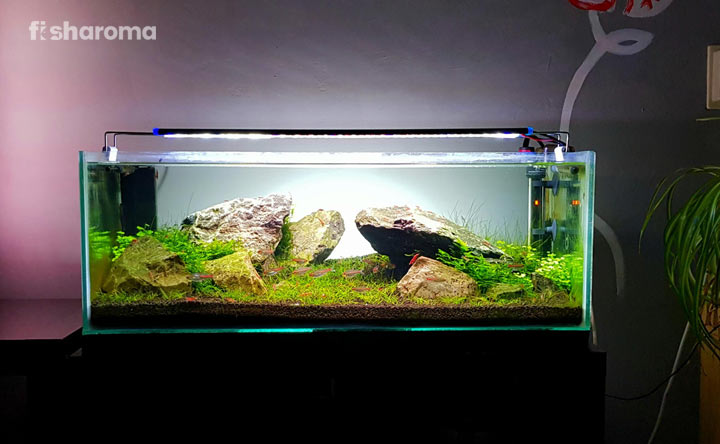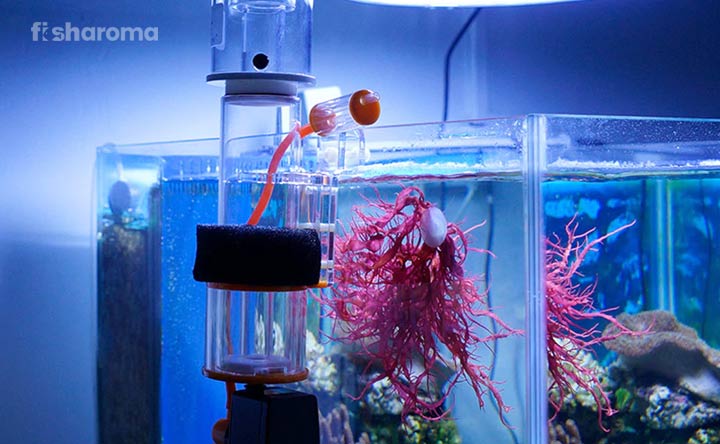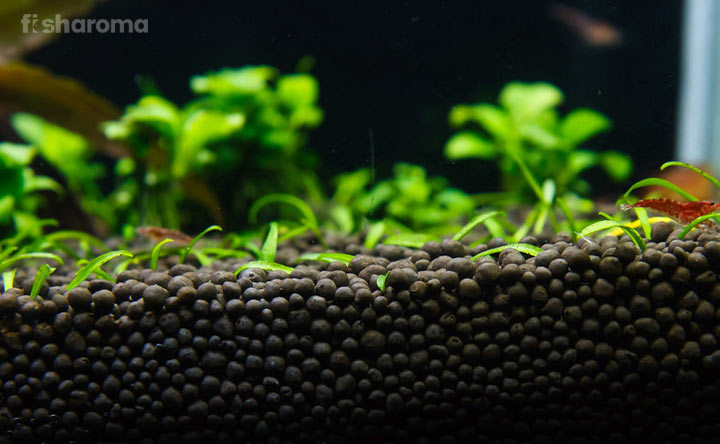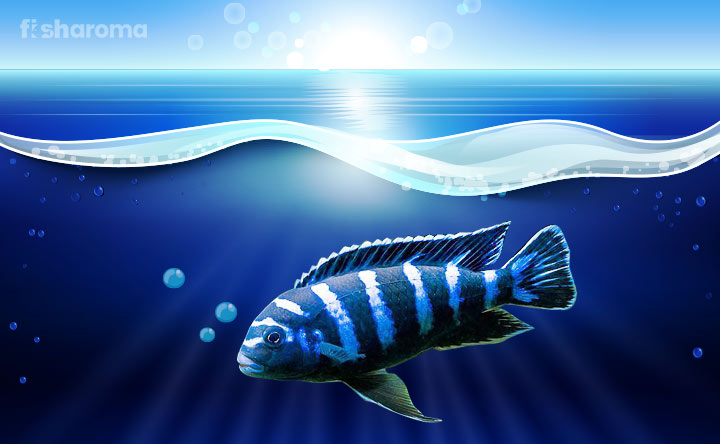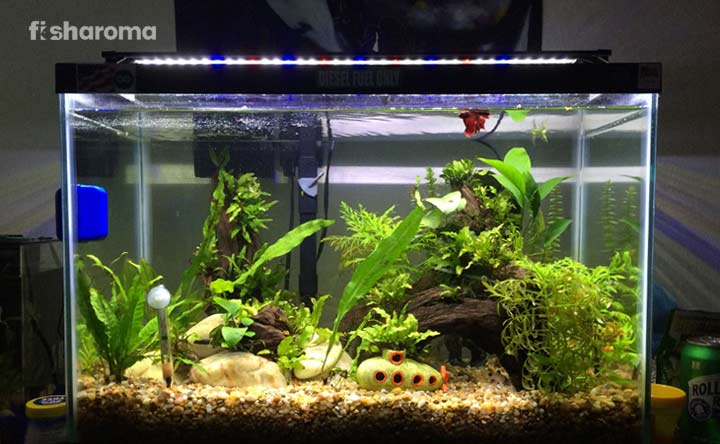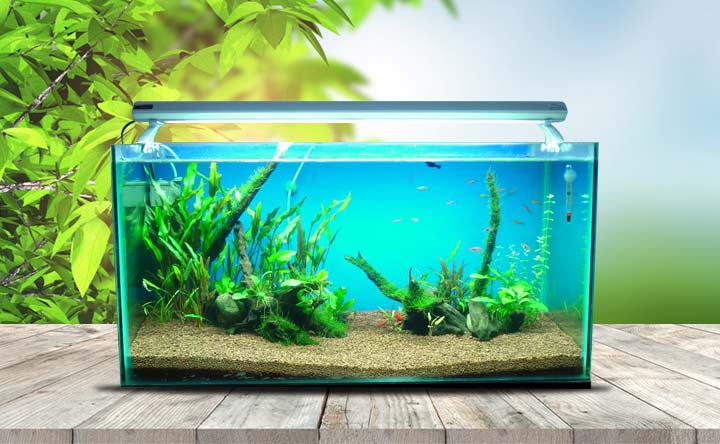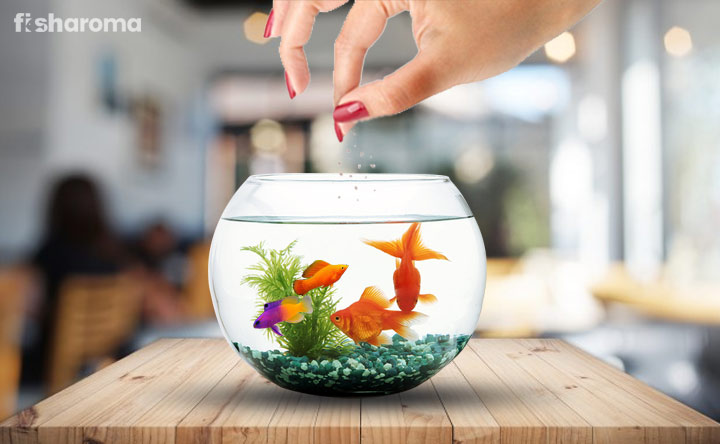Aquarium Fish Diseases – A Methodical Guide to Their Symptoms & Treatments
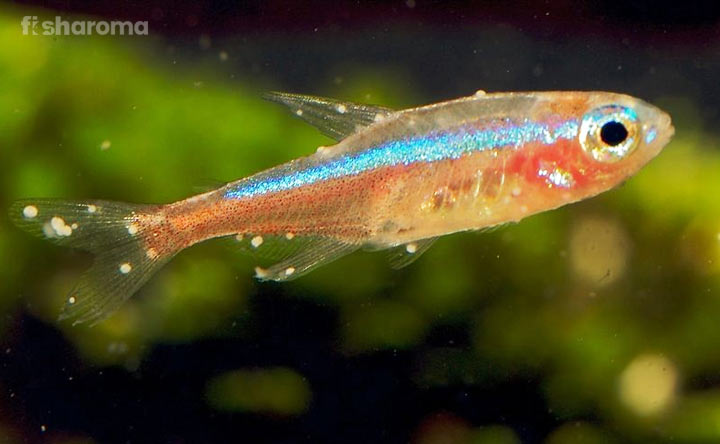
Just like any other living being, fish too suffer from multiple diseases; and if you are an aquarist, then this is going to be one of the biggest areas that you have to look into for ensuring their good health. It’s quite natural to get overwhelmed with the medical responsibilities that you have to take on for your pet. So, to help you out with the same, we are going to focus on some of the most common aquarium fish diseases and their symptoms and treatments.
Aquarium Diseases – An Overview
The chances of fish contracting diseases is higher in an aquarium because no matter how much you try, it is extremely difficult to replicate the natural environment of an aquatic species in a captive environment, such as a fish tank. Now, the level of care you need to take for your aquatic pet varies from species to species; some are extremely hardy, while others are very sensitive.
Nonetheless, it is crucial that you have a clear understanding of their health so that the way you can identify the diseases as soon as they arrive, and accordingly give your pet the proper diagnosis against them. Besides, it’s also important to learn the precautionary steps so that these diseases can be avoided in the first place.
In an aquarium setting, due to the absence of a natural healing system, your fish are more vulnerable and are completely dependent on you. Thus, you need to be for them always.
Fish Tuberculosis
One of the deadliest diseases that is communicable by nature.
Cause
Tuberculosis in fish is caused by bacterium Mycobacterium piscium.
Symptoms
- Loss of scales
- Loss of appetite
- Skin ulcers
- Dark nodules on the eyes or body
- Lethargy
Treatment
There is no known treatment to completely eradicate this disease. However, you may try Kanamycin and Vitamin B-6 for a period of 30 days. These are easily available. For every five gallons of water, add one drop of them to your tank. Quarantining the fish is also recommended.
It should be noted that it is communicable and humans can contract this disease. So, practice caution while handling a fish which is suffering from tuberculosis. Consulting a veterinarian in this case is absolutely mandatory.
Columnaris
It is one of the fastest –spreading diseases that spiral out of control pretty fast.
Cause
Columnaris is a fungal disease that usually affects freshwater aquarium fish. It is caused from the bacterium Flavobacterium columnare. It can enter the body of the fish through their mouth, gills, or any small wounds on the skin, which leads to an external and/or internal infection.
Other reasons behind this disease are poor quality of the tank water, unstable pH level of the tank water, improper diet, injury, and even stress.
Symptoms
- Damaged fins
- Grey and white film on skin.
- Ulcers
- Yellow to gray patches on gills
- Degradation of fin at the edges
- Lesions near the dorsal fins
- A dull white band around the body of the fish
Treatment
It is an extremely quick acting disease and demands immediate treatment. Since the disease leads to the production of a lot of toxins in the body and a loss of appetite, it is extremely fatal by nature.
Start by improving the quality of the water. The recommended treatment for this disease is gram-negative medication. Since some gram positive bacteria can mimic Columnaris, many people suggest that you go for both gram positive and gram negative medication.
Besides, there are a bunch of other antibiotics and other medications available to treat this disease. Some of them are Maracyn (erythromycin), Chloromycetin, Kanacyn (kanamycin), and Penicillin.
Columnaris is also known as Cotton Wool, Mouth Fungus, Saddle Back, Mouth Rot, and False Neon Disease.
Dropsy
It is a rather common disease that can be treated easily with a quick diagnosis.
Cause
The primary cause of Dropsy is bacterial infection that results in fluid retention. Other than that, it can also be caused by poor quality of the tank water.
Fish that are stressed are also likely to contract this disease since their immune system is affected by it.
Symptoms
- Loss of appetite
- Lethargy
- Swollen abdomen
- Protruding scales in and around the swollen area
Treatment
Consult a veterinarian and feed your aquatic pet anti-bacterial medicated food. You may also add antibiotic to the fish food, although that should be in minimal quantity.
Fin Rot
The symptoms of this disease are more apparent than most other fish diseases.
Cause
Fin rot or tail rot are usually caused by a bacterial infection and sometimes by the bullying nature of its tankmates, especially those who are notorious for nipping the fins.
If the right conditions in your aquarium are not maintained, then a simple cut may lead to a fin rot in your fish. Tuberculosis can also lead to this disease.
Symptoms
- Gradual deterioration of the fins/tail.
- Discoloration of the fins.
Treatment
Its treatment will depend on what exactly caused it; so, determine that first.
In most cases, antibiotics are sufficient to treat fin or tail rot. The recommended dosage is 20-30 mg per liter (0.2 gallon) of tank water. Adding antibiotic to the food is also suggested by many aquarists. Chloromycetin (chloramphenicol) or tetracycline is a highly recommended antibiotic that can be used here.
Hemorrhagic Septicemia (Red Pest)
This is one of those diseases where you need to basically focus more on the prevention part than the cure part due to the lack of the latter.
Cause
Hemorrhagic Septicemia is usually caused by a viral infection that is brought on to them through the introduction of a non-quarantined item in the aquarium.
Symptoms
- Bulged eyes
- Distended abdomen
- Eyes will be blood-shot red
- Red hues on the skin and gills
- Unusual behavior
- Internal organs hemorrhage
Treatment
There is no known cure of Hemorrhagic Septicemia but there are antibiotics that can reduce mortality. Consult your veterinarian for the same. In addition, quarantine everything before you put in the tank, including your pets.
Ich
This is one of the most common diseases affecting freshwater fish across the globe.
Cause
The primary cause for Ich in fish is stress that result from a rapid increase or decrease in the temperature of the tank water or any variations in the pH level.
Symptoms
- It is marked by small white spots on the head and body of the fish.
- Your fish will rapidly breathe and gasp for air at the water surface.
- Its fins will be clamped.
- You will notice it rubbing its body against the substrate or any other object in the aquarium.
Treatment
Gradually, increase the temperature of the tank water to 80° F (26° C) or a couple of degree more based on the type of fish you are keeping and maintain the temperature for a week or so before reverting to the normal temperature.
For cold-water fish, raising the temperature is not an option since that will make them sicker. So, medication is the only option viable for them. You also need to remove carbon from your filter since that will suck off the medication.
Swim Bladder Disease
A parasitic disease, it renders your fish helpless.
Cause
It is mostly caused by intestinal parasites. Besides, constipation that is induced by a high nitrate intake due to overfeeding can also result in this disease. Fancy Goldfish are among the most affected fish.
Symptoms
- Difficulty in floating or swimming
- Floating at the top of the water surface
- Sinking to the bottom of the tank
- Floating on their sides
- Floating upside down
- Curved back
- Distended belly
- Loss of appetite ( in few specimens)
Treatment
The first course of action that needs to be taken is to increase the temperature to 78-80° F (25-26° C) for a couple of days. Also, if the swim bladder is caused by an enlarged intestine or stomach, then don’t feed your fish for three days.
After three days, feed them blanched pea. You can also go for frozen peas that can be boiled or microwaved as they have the right consistency of not being too firm or too soft. Before serving it to the fish, don’t forget to remove the skin. Continue feeding them one pea per day for a couple of days before switching to their regular food. However, avoid pellets and flake foods.
Using antibiotics may also help if you are certain that the disorder has been caused by an infection. Other suggestive measures that can be taken are adding aquarium salt to your aquarium and reducing the level of water of the tank so that it is easier for your fish to move around. Reducing the water flow is also suggested.
Popeye
No, we aren’t referring to the cartoon character by the same name. We are talking about a disease where the eyes of your fish literally pop out.
Cause
If only one of the eyes of your fish is bulging, then it is mostly the result of an injury that can result from a fight with a fellow fish or getting accidentally poked with an ornament in your aquarium. However, if both the eyes of your fish are bulging out, then it is a result of an infection. Metabolic issue that leads to fluid build-up makes it difficult for your fish to eat, which in turn, can result in Popeye.
Besides, kidney failure and poor water conditions are also major causes of this disease.
Symptoms
- Swollen, puffed eyes
- Eyes bulging out of the eye socket
- Cloudy eyes ( in some cases)
Treatment
If only one of the eyes is injured, then perform palliative care by using aquarium salt until the eye heals. Changing the water on a regular basis and monitoring the water parameters can help protect your fish from this disease.
Quarantining the affected fish is also suggested. Adding antibiotics to food can also help treat Popeye. If more than one fish is affected by the disease, then you probably have to treat the entire tank with antibiotics. Veterinarians also recommend skin and gill biopsies in order to diagnose Popeye to determine if there is a parasite infestation.
Lymphocystis
The unknown cure of this disease makes it even scarier.
Cause
It is a viral disease that is prevalent in both freshwater and saltwater fish. Fish also become vulnerable to this disease when they are stressed after being put in a new environment.
Symptoms
- Tiny white pin-prick like growth on the fins and skin.
- Lesions at the bottom of the dorsal fin.
- Cauliflower-like growth on the mouth, skin, gills, and fins at a later stage.
Treatment
Unfortunately, this disease also doesn’t have any known proper treatment. Research is still in its early stages, but reportedly using the human anti-DNA virus drug acyclovir at a dosage of 200 mg every ten US gallons for a period of two days is being speculated as a possible cure.
Some suggest giving an antibiotic bath treatment to the affected fish so that the infection doesn’t spread around.
To prevent the disease, make sure the fish live in a stress-less environment wherein they are not attacked by their tankmates and where the water parameters are always maintained.
Hole-in-the-Head
If not acted upon quickly, it can escalate at a rate which you won’t be able to keep up with.
Cause
Also known as Head and Lateral Line Erosion (HLLE), the cause of Hole-in-the-Head disease is still to be found, although many claim that the continuous usage of activated carbon in a captive environment, such as an aquarium to be the reason behind it.
Symptoms
- Lesions on the head and lateral line
- Loss of appetite
- Round spots on the body
Treatment
Similar to most other diseases mentioned here, the treatment of this particular disease also depends on what caused it; so, try to ascertain that first. Nonetheless, you should anyways go ahead with improving the quality of the water and providing mineral and vitamin-rich nutrition to them.
Summary
Since many of the fish diseases are incurable, it is wise to make sure they don’t appear in the first place. Although different diseases have different preventive measures, you can’t go wrong with some of the basic aspects. These include maintaining proper water parameters (including pH level, water hardness, and mineral level).
Besides, we can’t stress enough as to how big of a role cleanliness plays in ensuring the health of your fish. Therefore, go for regular replacement of water and cleaning of tank. By water replacement, we mean changing a percentage of tank water at regular intervals. This is because changing the entire water content altogether will destroy the ecosystem of the aquarium, which will result in the death of the beneficial bacteria that are responsible for cycling the tank.
Also, for cleaning the tank, use lukewarm water and a soft cloth to wipe off the interior walls. Soap-based and chemical-based products leave their harmful residue behind even after repetitive washes, which lead to your fish having a higher chance of contracting diseases. You also need to vacuum the substrate, trim the leaves of the aquatic plants (if you have any) and clean the ornaments of your aquarium to minimize the risk of these diseases.
Finally, quarantine everything you put in your tank including your pet fish because you can never be completely sure as to what will be the carrier of the viral, parasitic, bacterial, or fungal infection in your tank. All these steps will go a long way in ensuring the fish diseases are a mile away from your aquarium.
Similar Fishkeeping Guides
Take a look at some of our other articles related to aquarium and fishkeeping.
- What do Fish Eat? – Wondering what a proper diet of a fish consists of? Let us come to your help by providing you all the information that you need to healthily feed a fish.
- How do Fish Sleep? – Sleeping is pivotal for the good health of any species, and fish are no different. Here’s a laydown of the sleeping patterns and styles of a fish.
- How is a Saltwater Tank Different from a Freshwater Tank? – There are a bunch of myths that are still floating around among aquarists across the globe regarding the differences between a freshwater and a saltwater tank, such as the latter is harder to maintain than the former. Here’s your chance to bust the myths with our help.


